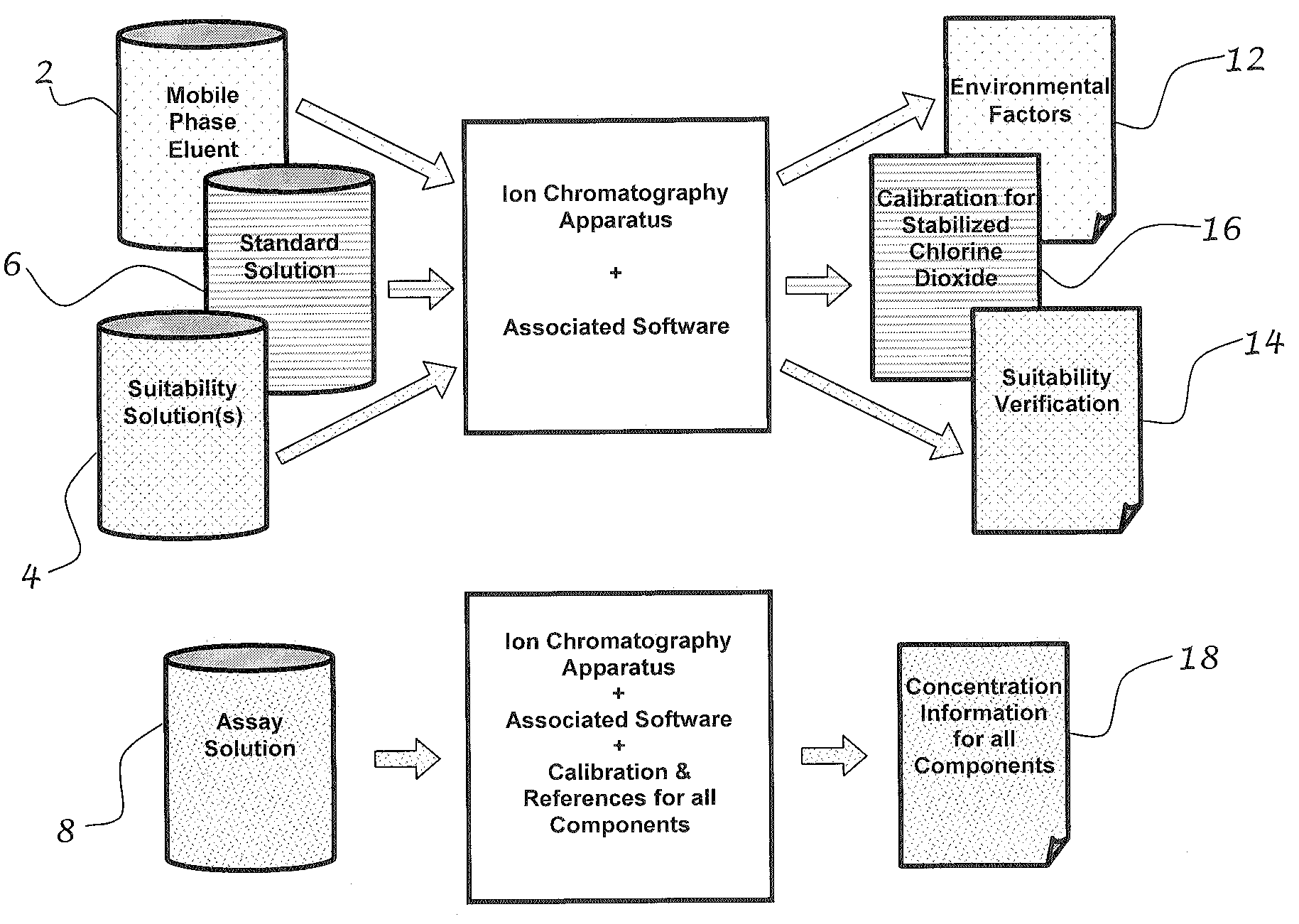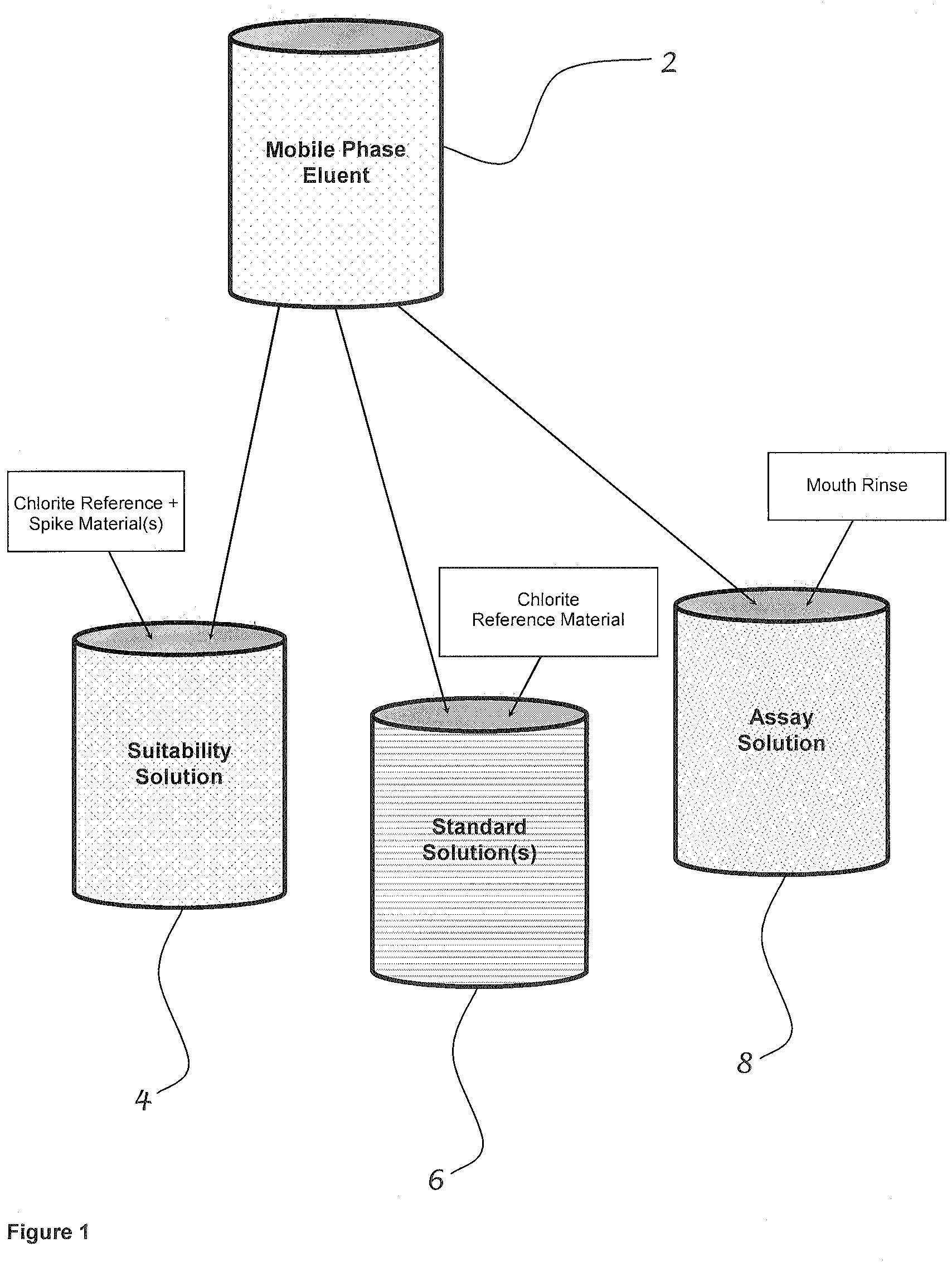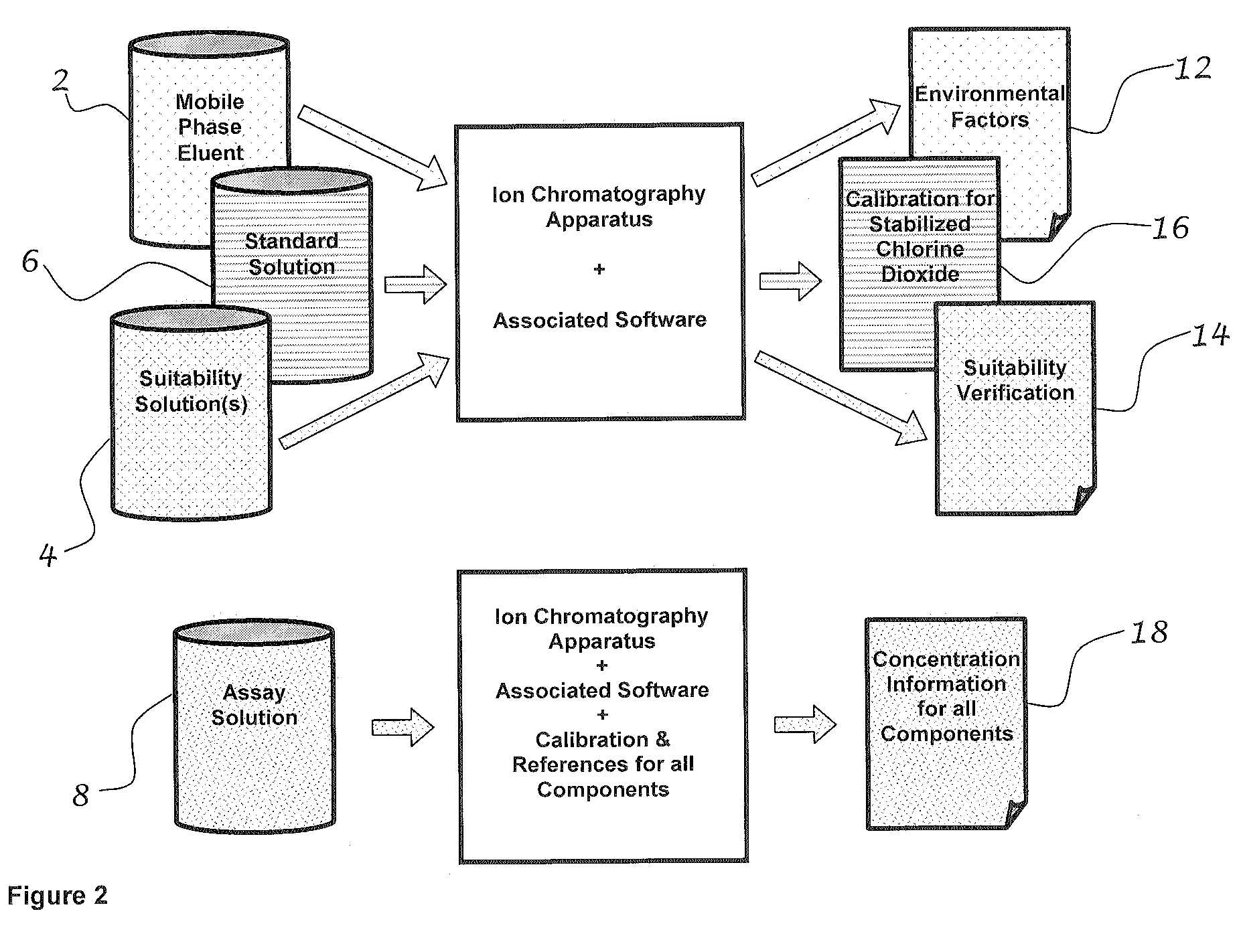Method for determining the effectiveness of stabilized chlorine dioxide in a mouth rinse
a technology of stabilized chlorine dioxide and mouth rinse, which is applied in the direction of halogen oxide/oxyacid, separation process, instruments, etc., can solve the problems of reducing the antimicrobial effect, reducing the effect of antimicrobials, and unable to adequately simula
- Summary
- Abstract
- Description
- Claims
- Application Information
AI Technical Summary
Benefits of technology
Problems solved by technology
Method used
Image
Examples
Embodiment Construction
Summary of the Illustrations in the Drawings and Tables
[0043]FIG. 1 shows mobile phase eluent 2, which is the base for each of the other three solutions. The components of the eluent depend on the instrumentation for the test. Based on the use of the Hitachi HPLC system, the components of the eluent are listed in detail in Table 1. The suitability solution 4 is the mobile phase eluent with the addition of a chlorite reference material and spiked with other ions of interest such as chlorate or chloride. The standard solution 6 is the mobile phase eluent with the addition of a known amount of chlorite reference material. The assay solution 8 is the mobile phase eluent with the addition of the mouth rinse (containing stabilized chlorine dioxide) being tested.
[0044]As shown in FIG. 2, first a baseline or indication of environmental factors 12 is determined by running the mobile phase eluent. Second, a known reference for chlorite ion is run to establish a relationship between peak size ...
PUM
| Property | Measurement | Unit |
|---|---|---|
| pH | aaaaa | aaaaa |
| wavelength | aaaaa | aaaaa |
| concentration | aaaaa | aaaaa |
Abstract
Description
Claims
Application Information
 Login to View More
Login to View More - R&D
- Intellectual Property
- Life Sciences
- Materials
- Tech Scout
- Unparalleled Data Quality
- Higher Quality Content
- 60% Fewer Hallucinations
Browse by: Latest US Patents, China's latest patents, Technical Efficacy Thesaurus, Application Domain, Technology Topic, Popular Technical Reports.
© 2025 PatSnap. All rights reserved.Legal|Privacy policy|Modern Slavery Act Transparency Statement|Sitemap|About US| Contact US: help@patsnap.com



